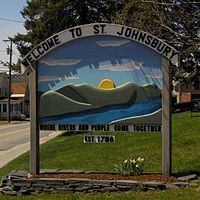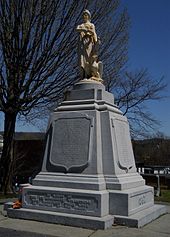- 1861 Historical Insight -- Medicine during the Civil War
- 1861 Historical Insight -- American Civil War -- Military Advancements
- 1864 Civil War Enlistment, NH, age 30
- 1868 Marriage to Mary Jane Bacon Scott age 34
Amos Ham must have farmed during most of the Civil War. Must have been very stressful. He volunteered late in the war.
1861 Medicine During the Civil War
 |
| Ancestry.com Historical Insight -- Medicine During the Civil War Credit: Buyenlarge/Archive Photos/Getty Image |
During the American Civil War,
the sheer volume of wounded soldiers forced doctors and nurses to develop
life-saving medical techniques.
|
The vast majority of deaths during the American Civil War were not on the battlefield; they were caused by disease. In 1861 germ theory did not exist, the root of infection remained a mystery, and medical training was crude. Little advancements had been made in the field since the American Revolution; some physicians still championed medieval methods of bloodletting, purging, and blistering to rebalance the body’s humors. However, development in weaponry, namely faster, more accurate rifles and shells killed hundreds of thousands and left many more badly wounded. Thus the war forced doctors and nurses to rethink medical treatments, as tens of thousands of soldiers flooded the ill-equipped field hospitals. The sheer volume of injured men prompted rapid amputations. By 1865, a surgeon could remove a limb in six minutes flat. Anesthetics were common—chloroform and ether were given to patients, along with morphine for the pain. Ambulance service also was born during the Civil War. The fallen were gathered from the field, their wounds wrapped up, and they were shuttled to battle-side hospitals. But for many, these advancements in techniques and sanitation came too little too late—upwards of 500,000 Americans died from disease and infection before the war’s end.
from Ancestry.com
|
1861 Military Advancements
 |
| Ancestry.com Historical Insight -- Civil War, Military Advancements Credit: Buyenlarge/Archive Photos/Getty Image |
Advancements in military weapons made the American Civil War a conflict of unparalleled carnage.
During the American Civil War, new weaponry revolutionized battle. The repeating rifle with Minié balls that allowed soldiers to fire seven rounds in 30 seconds without reloading replaced the musket. The repeating rifle increased accuracy, extending the firing range from 80 yards to 1,000. Thus forces were spaced further apart on the battlefield and to protect themselves built extensive fortifications and trenches.
Hand grenades and land mines also came into use during the war. However, the new explosives were finicky—sometimes Confederate soldiers used blankets to catch the incoming explosives and simply tossed them back to Union lines, where they exploded.
From the skies, passenger balloons spied on enemy lines and from below, Confederate submarines attacked ironclad ships enforcing the Union blockade. Unfortunately, technological advancements outpaced medical innovation.
The wounds caused by these new weapons were often deadly. In battle, modernized weapons proved harrowing. The sheer scale of fatalities and injuries was unmatched and, today, the Civil War remains the deadliest conflict in American history.
from Ancestry.com
1864 Military
 |
| Amos Ham 1864 Military Service |
This document is entitled "Dispersments in Aid of Families of Volunteers by the Town of __________________" The town name is left blank. More than halfway down, we have Amos L. Ham, 18th NH Regiment, Company B. He started September 17 1864. He has a wife Mary A and a Child under 10 (this would be the child Nellie). This aid was from September 30 1864 through April 30 1865, seven months. The family was paid 56$. The notation says "supposed to be with Regiment" whatever that means.
WAIT a minute! His wife is Amelia, not Mary. What gives here?
1864 Civil War enlistment
I don't have an image of this information. I found it on Ancestry.com here. His name is Amos L. Ham, enlisted at age 29 on 13 September 1864. He was a private when he enlisted in Company B, New Hamspire 18th Infantry Regiment. He mustered out on 10 June 1865. It says he was born about 1835.
How to Come Home Safe
I found this story when I entered Amos' name into the Google search field. Several books were written which included this inspirational story, I chose Incidents of the United States Christian Commission by Edward Parmelee Smith 1871. Published by J.B. Lippincott & Company, United States. The information for the book is found here, and the story is found hereAmos L. Ham, of Co. B, 18th N.H., told us how he was arrested by a message from his little daughter [ed note: this would be Nellie]. he labored under deep emotion as he spoke. His wife had written him a letter. Before sealing it, she turned to her little daughter and asked -- "What shall I write Father for you?" "Tell him," said little Nellie, "to look to God and trust Him, and then he will come home safe." The message went to the father's heart, humbling him at the foot of the cross, as a "little child."
1861 Amelia Hart Ham died
I don't have proof of the date of death, yet. Perhaps never. However, she had to have died somewhere before 1868 when he marries Mary Jane Bacon Scott, whose husband died a few weeks or days before the end of the war. Perhaps these two men knew each other?
I have in my files that she died 26 August 1861. This doesn't jive with the story above, where Nellie's mother was writing to Amos. Something is wrong, probably my records, since I don't have proof.
I have in my files that she died 26 August 1861. This doesn't jive with the story above, where Nellie's mother was writing to Amos. Something is wrong, probably my records, since I don't have proof.
1868 Marriage to Mary Jane Bacon Scott
They were married in Franklin, Merrimack NH on 1 May 1868. She was 30 years old, her father is listed as Henry Bacon. Her spouse is Amos L. Ham, also 30 years old. New information! His father is also Amos L. Ham! From Ancestry.com. New Hampshire, Marriage Records Index, 1637-1947 [database on-line]. Provo, UT, USA: Ancestry.com Operations, Inc., 2011.
I found another date of marriage as 20 May 1868, also from Ancestry.com.
But the definitive answer is 1 May as evidenced by the image of the actual marriage record.
 |
| 1868 Marriage record for Scott/Hamm front |
 |
| 1868 Marriage record for Scott/Hamm back |
Both are aged 30, Amos is a Farmer, and he was born in St. Johnsbury Vermont. This is a second marriage for both of them, as both spouses died leaving them both widowed.
Well, here's another record only it is for 20 May.
So, there is evidence for both dates, however one of them is transcribed later and is written in error. The second one is transcribed in 1906. The first set has no transcription date. I suspect the May 1st date is the correct one, and I think the one transcribed 38 years later is erroneous.
These are just my thoughts on the subject of both dates, I am open to suggestions. Is this your family? If you have any clarifications or want to connect, I'm happy to entertain options. Use the connextion form on the right.
These are just my thoughts on the subject of both dates, I am open to suggestions. Is this your family? If you have any clarifications or want to connect, I'm happy to entertain options. Use the connextion form on the right.

























